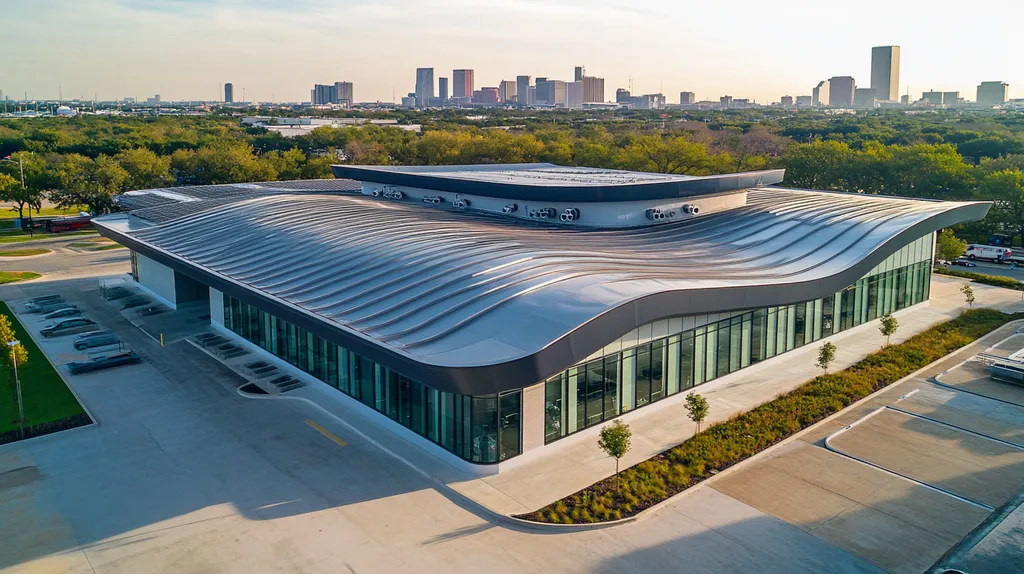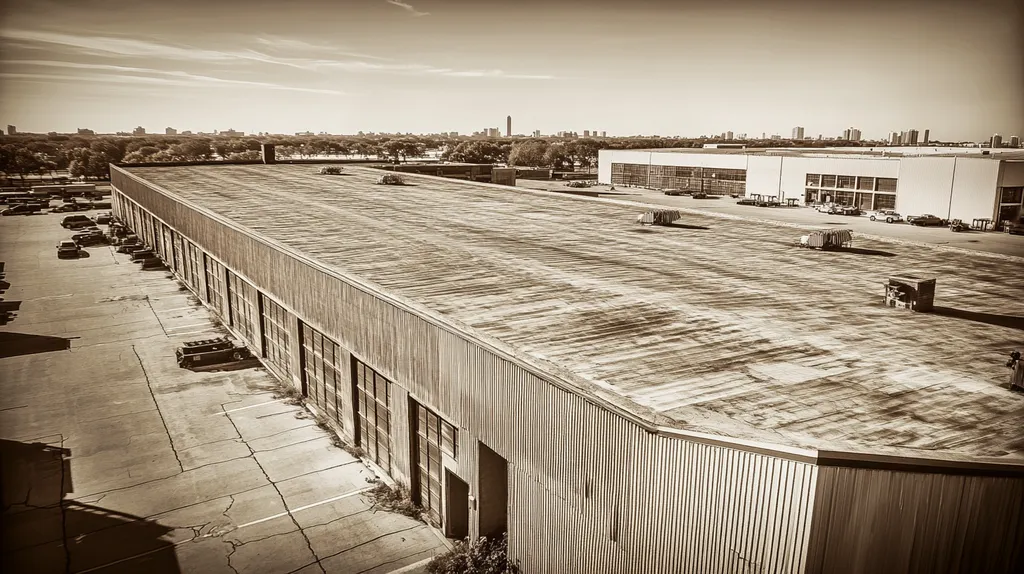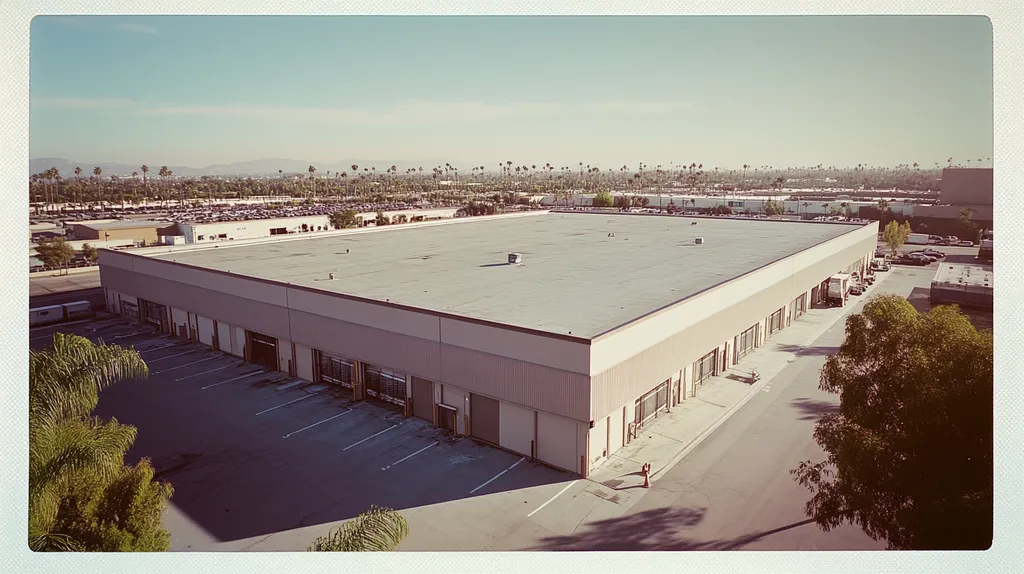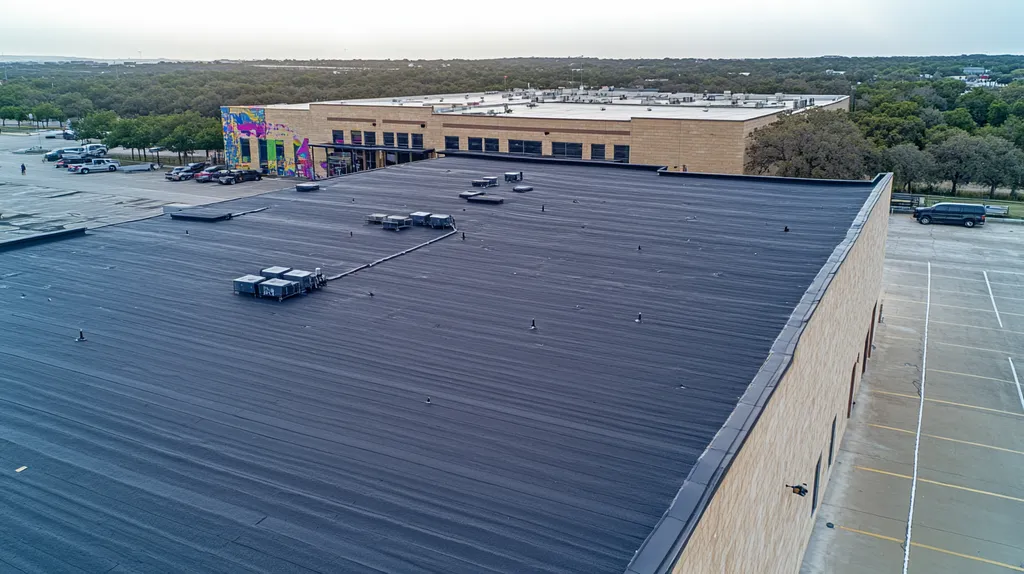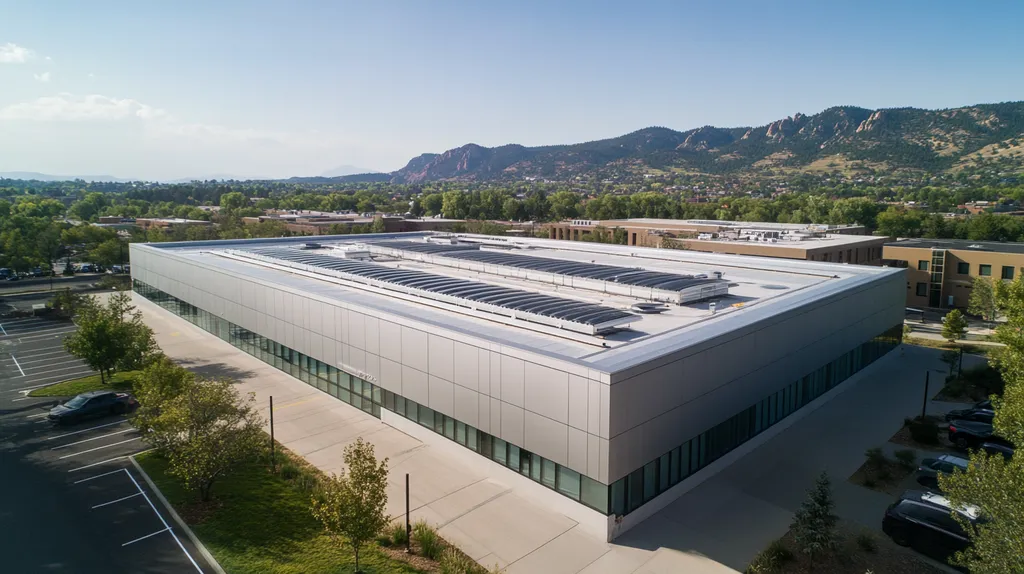Commercial roof repairs cost U.S. businesses over $12 billion annually, with 70% of these expenses stemming from delayed or improper timing of maintenance interventions. For facility managers, determining the optimal time for repairs can mean the difference between a minor fix and a catastrophic failure.
Weather conditions, budget cycles, and regulatory requirements all play critical roles in repair timing decisions. Understanding these factors helps property managers develop strategic maintenance schedules that protect assets while controlling costs.
This comprehensive guide examines performance metrics, financial considerations, compliance requirements, risk assessment strategies, and operational best practices to help facility managers optimize their roof repair timing.
SECTION 1: PERFORMANCE FACTORS
Knowing the optimal times to repair a commercial roof is essential for safeguarding property value and ensuring safety. A roof left unattended can lead to expensive leaks, higher energy bills, and even significant structural damage. Alarmingly, 70% of roofing failures are attributed to insufficient maintenance and oversight. This section delves into crucial performance factors—including roof condition monitoring, material degradation assessments, and weather impact strategies—to enhance repair timing.
Roof Condition Monitoring
Proactive roof condition monitoring is vital for effective facility management. Regular inspections can catch early signs of damage, like blistering or pooling water, which may escalate into more serious problems. For example, even a small crack can let moisture in, resulting in mold growth and further deterioration.
Inspection frequency should increase as the roof ages or is subjected to more extreme weather conditions. Facilities in harsh climates might need monthly checks. Utilizing advanced technology, such as drones or thermal imaging, can enhance the accuracy of inspections while ensuring worker safety.
Documenting inspection results is equally important. This information provides a performance history, helping managers anticipate future repair needs. By establishing a consistent monitoring plan, facility managers can make informed decisions about when repairs should occur, preventing costly emergencies.
Key Action Items
Material Degradation Assessments
Material degradation assessments are crucial for pinpointing the ideal times for roof repairs. Roofing materials such as TPO and EPDM each have their own lifespans and potential vulnerabilities. These assessments involve checking key physical attributes like cracks, tears, or discoloration.
For instance, a TPO membrane may show signs of surface cracking due to UV exposure, signaling the need for immediate action. Failure to address such wear can compromise the material’s integrity, leading to leaks and potential costly repairs.
A strategic approach is to schedule assessments according to the specific material types and their expected lifespans. This ensures timely evaluations that align with the natural degradation of the materials. Additionally, considering local environmental factors, like temperature extremes and humidity, can shed light on how quickly materials may wear down.
Key Action Items
Weather Impact Strategies
Weather significantly influences the timing of roof repairs. Roofs in regions with heavy snowfall or severe storms should be inspected before and after extreme weather events. Often, damage from harsh conditions goes unnoticed until symptoms like leaks or fallen debris emerge.
Implementing a weather impact strategy means actively monitoring local weather patterns to adjust repair schedules accordingly. Facility managers need to consider how seasonal changes can worsen existing roof issues, such as ice dam formation during winter months.
Additionally, leveraging weather-tracking technology can aid in forecasting potential threats to the roof. For example, proactive measures can be enacted to secure rooftop equipment ahead of a forecasted storm, minimizing the risk of damage.
Key Action Items
SECTION 2: FINANCIAL CONSIDERATIONS
Timing the repair of a commercial roof isn’t just about maintenance; it’s a critical financial concern. Delaying necessary repairs can escalate into larger, more expensive problems and operational disruptions. For instance, a leak neglected today may lead to severe structural damage tomorrow, driving repair costs even higher. This section outlines essential budget planning, cost-benefit analysis tools, and the return on investment (ROI) of preventive maintenance.
Budget Allocation Planning
Effective roof management begins with proper budget allocation. Facility managers should review their roofing budgets annually to ensure funds are readily available for urgent repairs. A general recommendation is to set aside 1% to 3% of the property’s value annually for maintenance and repair, allowing for adaptive financial planning in case of unexpected issues.
Analyzing historical maintenance data can provide insights into future repair needs. A well-maintained record aids in identifying recurring issues, enabling managers to project costs accurately and allocate budgets efficiently. This proactive approach minimizes the risk of sudden budget shocks due to unforeseen roof damage.
Investing in regular maintenance not only improves overall budget efficiency but also helps prioritize urgent repairs. This strategy reduces the likelihood of costly emergency fixes, encouraging a smoother budget transition and alleviating financial pressure related to unplanned disruptions.
Key Action Items
Cost-Benefit Analysis Tools
A strong cost-benefit analysis is crucial in understanding the financial aspects of roof repairs. Numerous online tools and software can help facility managers evaluate potential repair costs against long-term savings. By inputting current assessments and expected lifespans, stakeholders can forecast future expenses and make informed decisions.
Recognizing the costs of preventive maintenance compared to reactive repairs is vital. For example, a minor crack repaired now may cost a few hundred dollars, but if left unattended, it could escalate to thousands due to substantial damage or operational interruptions.
Furthermore, leveraging these analytical tools enhances communication with stakeholders. Well-supported financial data can justify funding requests for roofing projects, illustrating their long-term necessity and viability, making it easier to secure the required resources.
Key Action Items
ROI for Preventive Maintenance
The return on investment (ROI) for preventive maintenance on commercial roofs can be significant. Research indicates that for every dollar spent on basic maintenance, property owners can save between $5 and $10 in future repair costs. This underscores the essential value of proactive maintenance strategies.
A structured preventive maintenance program can greatly extend the lifespan of a roof. Consistent inspections and prompt repairs minimize the risk of severe damage, helping to control long-term costs and boost property value overall.
Additionally, effectively demonstrating the ROI of preventive maintenance can enhance stakeholder support. Presenting comprehensive data on savings, efficiency improvements, and extended roof life reinforces the argument for securing funds for proactive measures, creating a cycle of investment in ongoing maintenance.
Key Action Items
SECTION 3: COMPLIANCE REQUIREMENTS
Compliance with local regulations and building codes is not just important—it’s essential for the safety and integrity of commercial roofs. Failing to adhere to these standards can result in hefty fines, safety hazards, and long-term damage. Facility managers must understand the compliance landscape to make timely and effective roofing decisions. This section outlines the critical compliance factors, focusing on building codes and insurance requirements.
Regulatory Environment Overview
The regulatory framework governing commercial roofing is both extensive and location-specific. Local governments enforce building codes that ensure structural integrity, efficient drainage, and energy conservation. Non-compliance can lead to serious legal ramifications, including lawsuits and elevated insurance costs.
Organizations such as the International Code Council (ICC) offer guidelines that establish minimum roofing standards. Facility managers should keep abreast of these changes to prevent violations. Notably, these codes often specify when roof repairs must take place, especially after extreme weather events.
For instance, regions vulnerable to hurricanes may impose strict standards regarding roofing materials’ durability. Adhering to these regulations safeguards not just property but also accounts for potential energy savings over time, making compliance both beneficial and necessary.
Key Action Items
Building Code Adherence Checks
Building codes serve to maintain safety and functional effectiveness in roofing systems. Every installation or repair must align with these codes to mitigate liability. Therefore, comprehensive inspections should be conducted before undertaking any roofing work.
States like California enforce specific codes that may require reflective roofing to enhance energy efficiency. Facility managers are advised to conduct thorough audits to verify compliance with local building codes, assessing materials, drainage systems, and overall structural integrity.
Documentation plays a critical role in this process. Keeping detailed records of compliance checks and past repairs provides essential proof should any inspections arise. This emphasizes the need for consistent evaluations and prompt repairs to remain compliant.
Key Action Items
Insurance Compliance Reviews
Insurance policies frequently come with stringent requirements regarding roofing systems. Many commercial insurance providers require regular inspections and maintenance as part of their coverage. Non-compliance can result in denied claims when damage occurs, potentially leaving property managers financially vulnerable.
Facility managers should routinely review insurance policies, aligning roofing maintenance schedules with these requirements. They should also consider any recommendations made by insurance adjusters, as these insights can significantly lower the risk of future claims.
Moreover, maintaining a detailed digital log of all roofing repairs and maintenance serves as vital documentation during insurance claims. Gaps or inaccuracies in this record can jeopardize coverage and complicate loss assessments.
Key Action Items
SECTION 4: RISK MANAGEMENT
Effective risk management is vital for the safety and durability of commercial roofs. A compromised roof can cause significant water damage, safety risks, and substantial repair costs. Alarmingly, nearly 60% of roof failures could have been prevented. Facility managers must prioritize risk assessments, proactively identify hazards, and develop comprehensive mitigation strategies to protect their investments.
Risk Assessment Methodologies
To effectively assess the risks associated with a commercial roof, facility managers should take a systematic approach. Techniques like regular visual inspections and drone technology help identify potential issues early, significantly lowering long-term repair costs.
A thorough risk assessment plan includes analyzing historical data, performance metrics, and local weather patterns. By utilizing this data-driven approach, managers can spot trends and anticipate risks, particularly from extreme weather.
Employing risk assessment tools also aids decision-making. These tools can provide quantifiable measures of roof condition and lifespan, allowing managers to prioritize repairs based on urgency and potential impact.
Key Action Items
Hazard Identification Techniques
Identifying hazards is a crucial part of risk management. Facility managers must consider both external and internal factors, such as debris from nearby trees or issues with HVAC systems, which can negatively impact the roof.
Regular training for maintenance staff can enhance their ability to identify hazards. By equipping teams with the skills to recognize warning signs like leaks or deteriorating flashing, managers can prevent minor issues from becoming major problems.
Incorporating technology solutions can further improve hazard identification. For example, thermal imaging can reveal hidden leaks or moisture that threaten roof integrity.
Key Action Items
Mitigation Strategy Development
Creating targeted mitigation strategies is essential for minimizing risks. Facility managers should establish a proactive maintenance schedule based on findings from risk assessments. This reduces the chances of unexpected failures and their associated costs.
Working with roofing professionals also helps in defining these strategies. Expert guidance ensures that maintenance practices comply with industry standards and address specific vulnerabilities in the roofing system.
Additionally, having an emergency response plan is crucial. This plan should outline actions to be taken during unforeseen roof events, like severe leaks or structural failures, minimizing disruption and damage.
Key Action Items
SECTION 5: OPERATIONAL PROCEDURES
The health of a commercial roof is vital for maintaining the overall integrity of a building. Timely repairs can prevent minor issues from escalating into costly and disruptive failures. Alarmingly, 70% of roofing problems stem from inadequate maintenance and timely inspections. Facility managers must adopt efficient operational procedures to tackle these issues effectively, emphasizing maintenance scheduling, inspection frequency, and repair prioritization.
Maintenance Scheduling Best Practices
Effective maintenance scheduling is crucial to extending a commercial roof’s life. Regularly planned maintenance minimizes unexpected failures and optimizes budget allocations. Proactive maintenance programs can reduce long-term costs by up to 50% compared to reactive approaches.
Creating a maintenance calendar that reflects seasonal changes is advisable, as specific weather conditions can worsen roof wear. For example, inspections scheduled before winter can help identify vulnerabilities at risk of damage from snow and ice. Maintaining consistent communication with roofing contractors streamlines tasks and ensures proper documentation.
Utilizing advanced scheduling technology, such as software that highlights upcoming maintenance dates based on warranty requirements, can further enhance adherence to a structured routine, reducing neglect and prolonging the roof’s integrity.
Key Action Items
Inspection Frequency Guidelines
Regular inspections are essential for spotting problems before they worsen. The National Roofing Contractors Association recommends at least two inspections per year along with post-storm assessments. This approach helps ensure that any damage, even minor, is documented and dealt with promptly.
Incorporating seasonal inspections allows facility managers to address hazards related to specific weather conditions. For instance, checking for loose shingles after heavy rain can prevent extensive water damage. Additionally, regular inspections contribute to the longevity of warranty agreements by demonstrating diligent maintenance practices.
Documenting inspection findings is equally crucial. Detailed records assist in quick decision-making, providing a comprehensive history of the roof’s condition and past repairs. This documentation can also enhance credibility with insurance providers, expediting claims when necessary.
Key Action Items
Repair Priority Setting Criteria
Establishing repair priorities guides resources to where they are most needed. Not all roofing issues carry the same weight; thus, criteria must be defined to assess risks effectively. Critical issues, such as leaks or structural weaknesses, should always be prioritized.
Facility managers should leverage a risk assessment matrix categorizing concerns into low, medium, and high priorities. Urgent matters require immediate attention to avert catastrophic failures, while lower-priority tasks can be incorporated into regular maintenance schedules. This structured approach empowers managers to allocate budgets wisely without jeopardizing roof performance.
Assessing the impact of repairs on operational continuity is also vital. For example, repairs posing a significant threat to employee safety or uptime should take precedence. Establishing a communication plan enhances tenant and staff awareness during repair work, further reducing disruption.
Key Action Items
SECTION 5: OPERATIONAL PROCEDURES
The health of a commercial roof is vital for maintaining the overall integrity of a building. Timely repairs can prevent minor issues from escalating into costly and disruptive failures. Industry data shows that 70% of roofing problems arise from a lack of proper maintenance and timely inspections. To address these issues effectively, facility managers must implement efficient operational procedures that focus on maintenance scheduling, inspection frequency, and repair prioritization.
Maintenance Scheduling Best Practices
Effective maintenance scheduling is essential for extending the life of a commercial roof. Regularly planned maintenance minimizes unexpected failures and optimizes budget allocations. A proactive maintenance program can reduce long-term costs by up to 50% compared to reactive approaches.
Creating a maintenance calendar that considers seasonal changes is advisable, as specific weather conditions can worsen roof wear. For example, scheduling inspections before winter allows for identifying vulnerabilities that could be exacerbated by snow and ice. Consistent communication with roofing contractors streamlines tasks and ensures proper documentation.
Employing advanced scheduling technology, like software that highlights upcoming maintenance dates based on warranty requirements, can further enhance adherence to a structured routine. This approach not only serves as a reminder but also helps reduce the risk of neglect.
Key Action Items
Inspection Frequency Guidelines
Regular inspections are critical for catching problems before they escalate. The National Roofing Contractors Association recommends at least two inspections per year alongside post-storm assessments, ensuring that any damage, no matter how minor, is documented and addressed quickly.
Incorporating seasonal inspections allows facility managers to target hazards specific to particular weather conditions. For instance, inspecting for loose shingles after significant rainfall can prevent extensive water damage. Additionally, these inspections can help maintain warranty agreements by showing diligent care.
Documenting inspection findings is equally crucial. Comprehensive records facilitate swift decision-making, providing a detailed history of the roof’s condition. This documentation supports claims with insurance providers, helping expedite any necessary coverage actions.
Key Action Items
Repair Priority Setting Criteria
Establishing repair priorities is essential for directing resources effectively. Not all roofing issues are equally severe; therefore, criteria must be defined to assess risks properly. Critical concerns like leaks or structural damage should always be addressed first.
Facility managers should utilize a risk assessment matrix to categorize issues into low, medium, and high priorities. High-priority concerns require immediate action to prevent severe failures, while lower-priority items can be integrated into regular maintenance schedules.
Evaluating the impact of repairs on overall operations is also vital. Repairs that pose significant risks to safety or operational continuity should take precedence. Implementing a communication plan with tenants and staff during repairs can help minimize disruptions.
Key Action Items
The Bottom Line
Commercial roof repairs represent a $12 billion annual investment, with timing being the most critical factor in controlling costs and preventing catastrophic failures.
Studies show that properly timed maintenance can reduce lifetime roofing costs by up to 50% while extending roof lifespans by 5-10 years.
Success requires a strategic combination of performance monitoring, financial planning, regulatory compliance, risk management, and systematic operational procedures.
Facility managers who implement the comprehensive checklist approach outlined in this guide position themselves to optimize repair timing and protect their roofing assets.
With 70% of roof failures stemming from delayed maintenance, the stakes for getting repair timing right have never been higher.
FREQUENTLY ASKED QUESTIONS
Q. When is the best time to repair a commercial roof?
A. The optimal time for repairs is when weather conditions are mild, typically in spring or fall. Scheduling repairs during these seasons minimizes disruption and allows materials to cure properly. Regular inspections should also be performed to catch issues promptly.
Q. How do financial aspects affect commercial roof repairs?
A. Financial aspects significantly influence repair timing. Delaying repairs can escalate costs and operational interruptions. Allocating a budget for regular maintenance helps prevent costly emergencies and ensures timely interventions, ultimately preserving property value through proactive management.
Q. What compliance requirements exist for commercial roofs?
A. Compliance requirements often involve adherence to local building codes, which focus on safety and durability. Regular inspections and timely repairs following extreme weather are essential to avoid penalties and maintain integrity, safeguarding both the property and its occupants.
Q. How can I manage risks associated with commercial roof repairs?
A. Effective risk management involves regular inspections, hazard identification, and proactive maintenance scheduling. Utilizing risk assessment tools helps prioritize repairs based on urgency, thus minimizing potential damage and ensuring the roof’s longevity. Having an emergency response plan is also key.
Q. What are best practices for maintenance scheduling of commercial roofs?
A. Best practices include creating a seasonal maintenance calendar, scheduling inspections before harsh weather, and ensuring clear communication with contractors. Utilizing technology for tracking maintenance dates helps maintain adherence to schedules, thereby optimizing the roof’s lifespan and performance.
Q. How often should inspections of a commercial roof be conducted?
A. Inspections should be conducted at least twice a year, with additional post-storm assessments. This frequency allows for timely identification of potential issues and is vital for maintaining compliance with warranty agreements by demonstrating consistent care.
Q. What criteria should be used for setting roof repair priorities?
A. Establishing repair priorities involves classifying issues based on risk level, urgency, and impact on operational safety. By utilizing a risk assessment matrix, facility managers can efficiently allocate resources to address critical repairs first, preventing more severe failures later.

